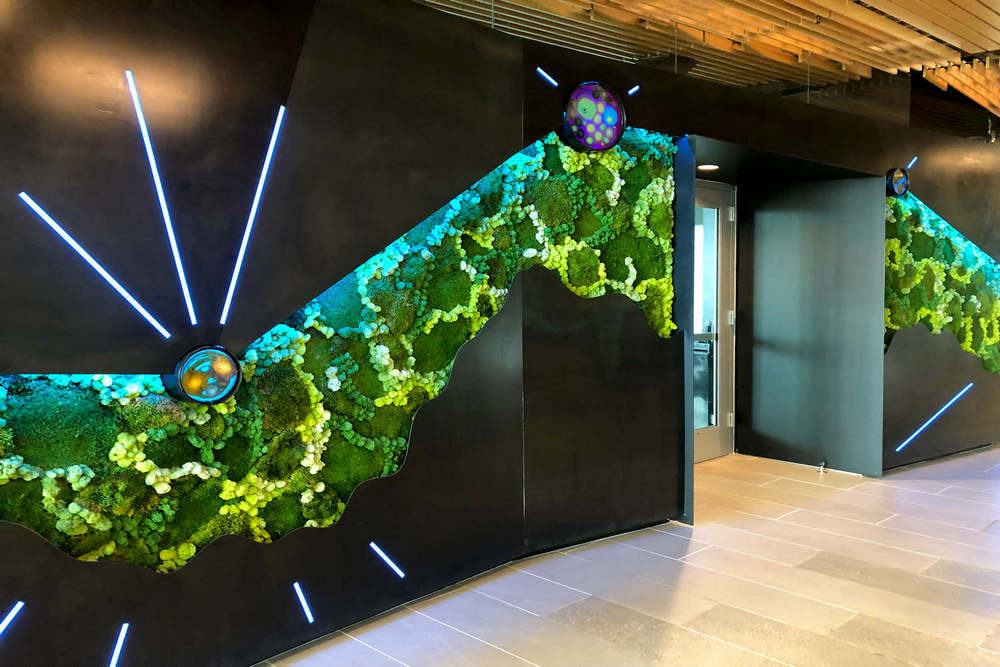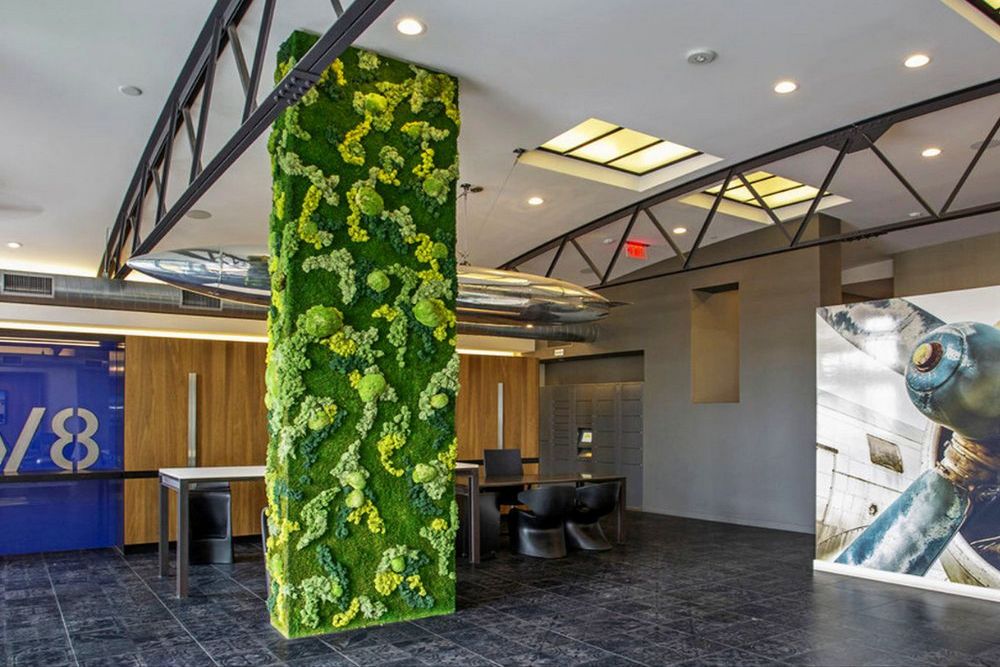The Science behind How Plants Improve Life Indoors
There are measurable effects in the way people think, behave, and feel when they are in an environment that contains plants versus one that does not. Did you know that plants can also clean the air we breathe? There has been real scientific work done, which confirms what interior plant service providers have been saying all along: that plants indoors have a direct effect on things like employee productivity, reduction of airborne pollutants, and combating stress and fatigue. So let’s get into why you should have plants at work!
Cleaning the Air
After the NASA study, Dr. Wolverton and others have continued to do research into this phenomenon since the first study was published in the 80’s.
Plants and Soil Microorganisms: Removal of Formaldehyde, Xylene, and Ammonia from the Indoor Environment
This study found that quite a few plant species, notably Boston ferns, chrysanthemums, and dwarf date palms, were able to remove considerable amounts of these chemicals from the air inside sealed chambers. Based on prior research into indoor air pollutants by the EPA, the authors calculated that an average-sized office constructed of typical building materials would contain 3916 µg (micrograms) of formaldehyde. A single Boston fern was shown to remove 1863 µg of this formaldehyde per hour! The mums and palms were not far behind, and there was a decent list of other plants which were also quite effective at removing formaldehyde from the air.
The other part of the study looked at the microorganisms which colonize the rhizosphere (the area immediately surrounding plants’ roots) and their role in removing these chemicals. They found that unsterilized soil was able to remove formaldehyde from the air while sterilized soil was not, and that soil containing a plant was more effective still. They found that different types of bacteria had an effect on how much formaldehyde was removed, and the data indicated that different plants harbor different types of soil bacteria.
Purification Ability of Interior Plant for Removing of Indoor-Air Polluting Chemicals Using a Tin Oxide Gas Sensor
This study performed similar experiments to the one above, with a slightly different method. Their results were similar: plants and their associated bacterial communities removed airborne pollutants quite effectively from the atmosphere. One point of note is that temperature and light had a substantial effect on the experimental results, suggesting that plants are more effective when cleaning the air when they are actively growing. This bolsters the case for optimizing plant health in the interior landscaping to maximize this beneficial effect.
Improving Employee Productivity
This is a claim that is often used because it seems to infer a real economic benefit to the client. We are inclined to agree with the science, and we can see that this certainly makes interior landscaping more marketable. Still, it almost feels like a bribe: surely, plants can be desirable of their own merit, and surely the effect they have on people should not be measured in terms of productivity but of general mental and physical health? Do businesses actually purchase plants to get more out of their staff? At any rate, the effect has been measured in the following papers; let’s call it here just an added bonus to the addition of plants to the workplace.
Interior Plants May Improve Worker Productivity and Reduce Stress in a Windowless Environment
This is one of the commonly cited ones, in which the authors noted a 12% increase in productivity (measured as reaction time to a computer task). One more interesting point in the study is the result on the blood pressure of the participants, which measured significantly lower during and after completing a computer-based productivity task in participants in a room with plants versus that of those in a room without plants.
Effect of Ornamental Foliage Plants on Visual Fatigue Caused by Visual Display Terminal Operation
These Japanese researchers found that viewing plants while performing tasks on a visual display terminal (presumably a computer screen of some sort) resulted in reduced visual fatigue when measured as critical flicker fusion frequency.
Plants Enhance Productivity in Case of Creative Work
This is more of a press release than an actual paper, but it highlights the results of an experiment carried out by researchers in The Netherlands, which found that, while no improvements to productivity tasks were noted, there was a marked improvement in the performance of creative tasks. These improvements were even more dramatic with test subjects with self-reported stress or exhaustion.
General Health and Wellbeing
This is probably the most important one because it has to do with the concept of biophilia. We believe that humans have an innate subconscious need for proximity to natural elements, and keeping plants indoors proves to be a noteworthy way of satisfying this in our modern urban settings.
General mental health seems a difficult thing to quantify. Still, the works below can convey a few measured benefits to having plants around us while spending, as we typically do, the majority of our time indoors.
Stress Recovery during Exposure to Natural and Urban Environments
This lab study measured several parameters (heart rate, muscle tension, etc.) during and after showing the participants videos of people getting into violent industrial accidents, followed by a video of either a fast-moving stream, a wooded area, or varying degrees of busy vehicle or foot traffic. The results clearly showed that the wooded scene was very effective in recovery from the stress indicated in the physical tests.
The self-report from the participants also indicates that the nature scene was the most positively affective by far and best able to reduce anger, aggression, and sadness.
Greening the Great Indoors for Human Health and Wellbeing
This extensive study looked at various aspects of how keeping plants indoors relates to human well-being, from mental and physical standpoints. In section 5, the authors had their subjects complete Profile of Mood States questionnaires, a widely accepted method for measuring different psychological states, before and after the placement of varying numbers of plants in their workspaces for three months. The questionnaires covered such feelings as tension/anxiety, fatigue, and confusion.
The data shows that plants did affect these parameters and that the control group with no plants scored even worse on the questionnaire than it initially had done, while the subjects with plants saw their scores improve markedly.
The Role of Nature in the Context of the Workplace
This is also mostly a literature review and includes quite a few statistics from other authors’ papers, but the author points to two of her own studies, and the second one in a survey rating employee satisfaction. The availability of a view out of doors was considered far more valuable and restorative if it contained natural elements. It became even more so the more natural elements could be seen. Further to this, respondents with clear outside views to natural elements reported feeling more positive about their work in general.
From the above:
“These results point to the range of impacts that a view of nature can affect. Those with a view of nature felt less frustrated and more patient, found their job more challenging, expressed greater enthusiasm for it, and reported higher life satisfaction as well as overall health.”
We hope this helped you understand and be informed about the benefits of having plant at work! If you want plants at work, please don’t hesitate to call us at 858.488.0611.





